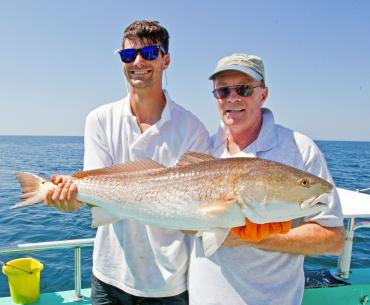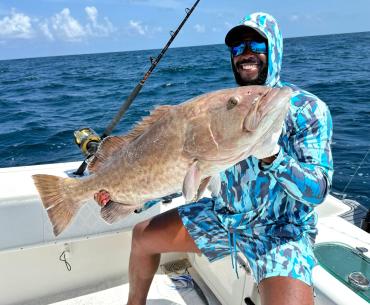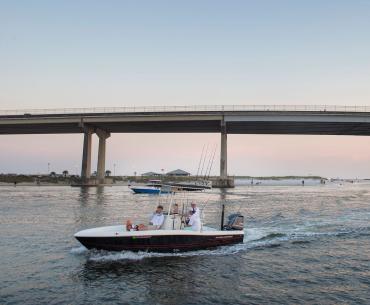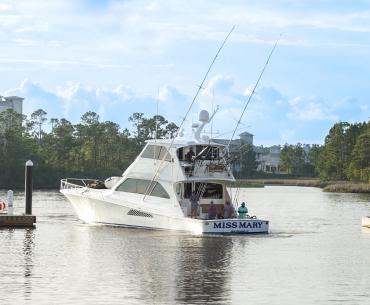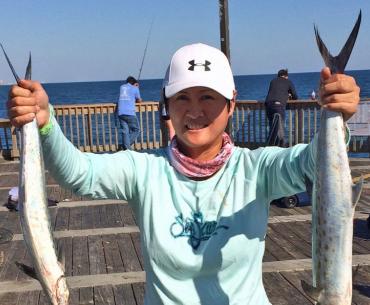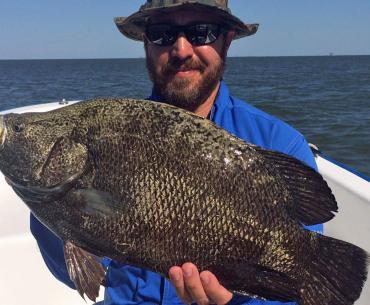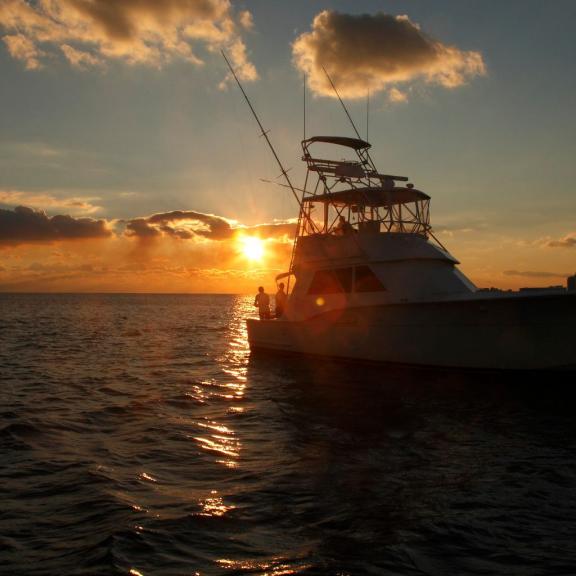
Flounder gigging has become a lost art unless you’re lucky enough to catch one of Mobile Bay’s famous jubilees. Try your hand at flounder gigging this year!
Flounder gigging was once a cherished tradition on the Alabama Gulf Coast that had the shoreline scattered with lights as the giggers searched the shallow water for one of the best eating fish around.
Now the practice of flounder gigging has become somewhat of a lost art unless you’re lucky enough to catch one of Mobile Bay’s famous jubilees, where flounder and other bottom-dwelling fish and crustaceans pile up on the shoreline.
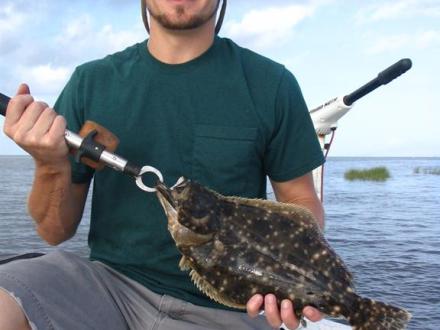
Flounder Gigging Preparation
For a successful night of gigging along Alabama’s beaches, certain weather conditions make it a lot easier. Look for a night with calm or very little wind. A rising tide, at least halfway back from a low tide, is when the flounder move into the shallow water to ambush baitfish. Sometimes a neap tide will work, but a low tide doesn’t seem to work well in most areas. If you’re lucky enough to catch a light, north wind, it will smooth out the waves on the front beach and make the flounder much easier to spot as you ease along. If the wind is blowing against the bank or beach, it can silt up the water and make it harder to see the prey.
The flounder rig of years past consisted of a Coleman-type lantern with a reflective shield that kept the gigger from being blinded. Today’s serious gigger with go with a battery-powered light that is on a shaft. One of the best rigs I’ve seen is to take a small garden tractor battery and attach it to a backpack frame. The 12-volt, sealed light is then submerged just under the surface to light up the bottom and keep the reflections from the ripples out of the picture.
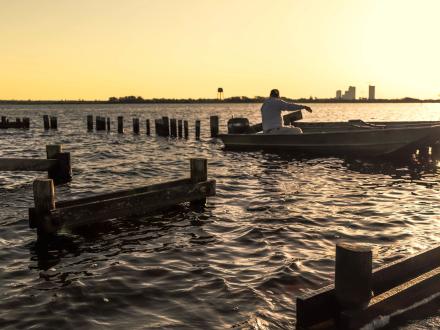
The underwater light system increases your field of view considerably. You can often spot flounder out 20 feet in front of you instead of the usual six or seven feet with a traditional light.
Speaking of light, the refraction of the light through the water’s surface gives the illusion the fish is farther away than it actually is, so always aim low. As you approach a fish, ease your gig into the water and make the thrust without having to go through the surface of the water. And don’t use your gig like a cane; the disturbance when the point of the gig goes into the sand can sometimes be enough to spook the fish.
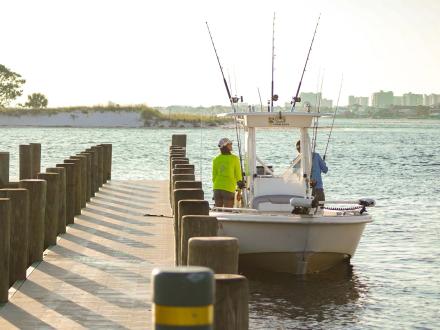
Where Can You Find Flounders on Alabama’s Gulf Coast?
To find flounder, look for areas with a hard, sandy bottom with long, parallel lines in the sand near the beach.
In Alabama waters, two sub-species of flounder can be found, the Southern flounder and the Gulf flounder. The Southern flounder is much more common and has more subtle colors. Alabama is on the western edge of the range of the Gulf flounder, which is typically smaller, but the coloration is much more pronounced.
Alabama’s saltwater fishing regulations include a flounder bag and size limit of five fish per person with a 14-inch size minimum, so be sure the fish is the legal size before you stab the gig. A saltwater fishing license is required. Also, the flounder fishing season is closed for the entire month of November to protect the fish’s spawning activity.
If you have a successful out, you will be richly rewarded with a fish with mild, flaky white flesh that can be prepared in many ways.
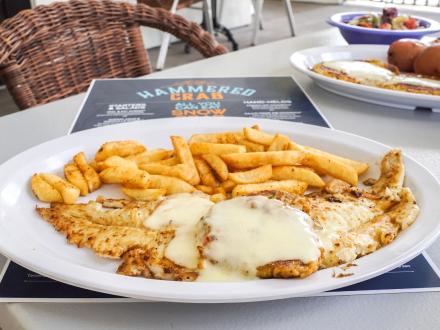
How To Eat Your Fresh Flounder!
Frying fresh flounder fillets is always a great option, but one method I love is to grill the whole flounder. I take the flounder and scale it. I then take a sharp knife and score the fish all the way to the backbone in a diagonal pattern about an inch apart. I sprinkle Cavender’s Greek Seasoning liberally over the fish, making sure some of the seasoning gets into the scored areas. When the grill is hot, I place the fish on top of aluminum foil. I check the fish often, and when the fish flakes in the thickest area, it’s time to dine on one of the premier inshore species on the Alabama Gulf Coast.
